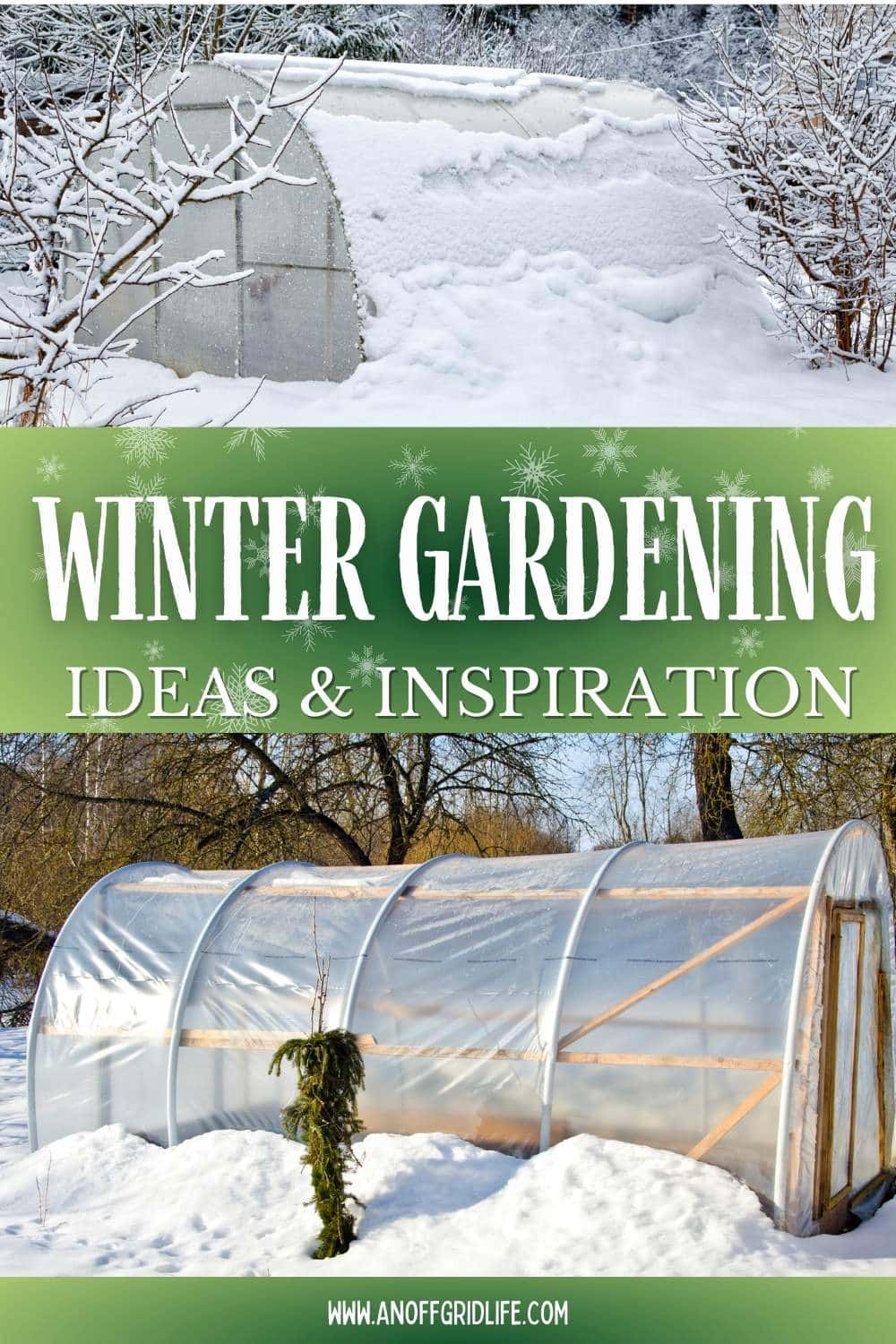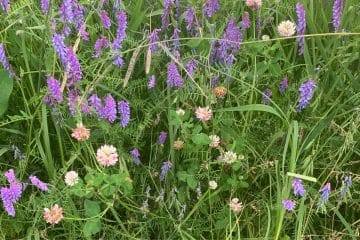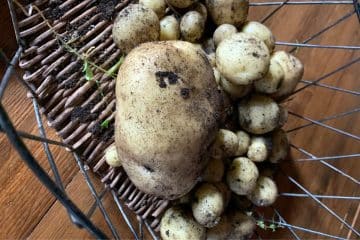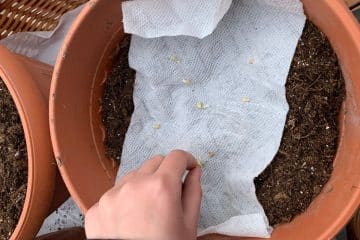As the cold winds of November blow, it may feel like it's time to stow away your gardening tools. Yet, as these winter gardening ideas will show you, you may have another option.
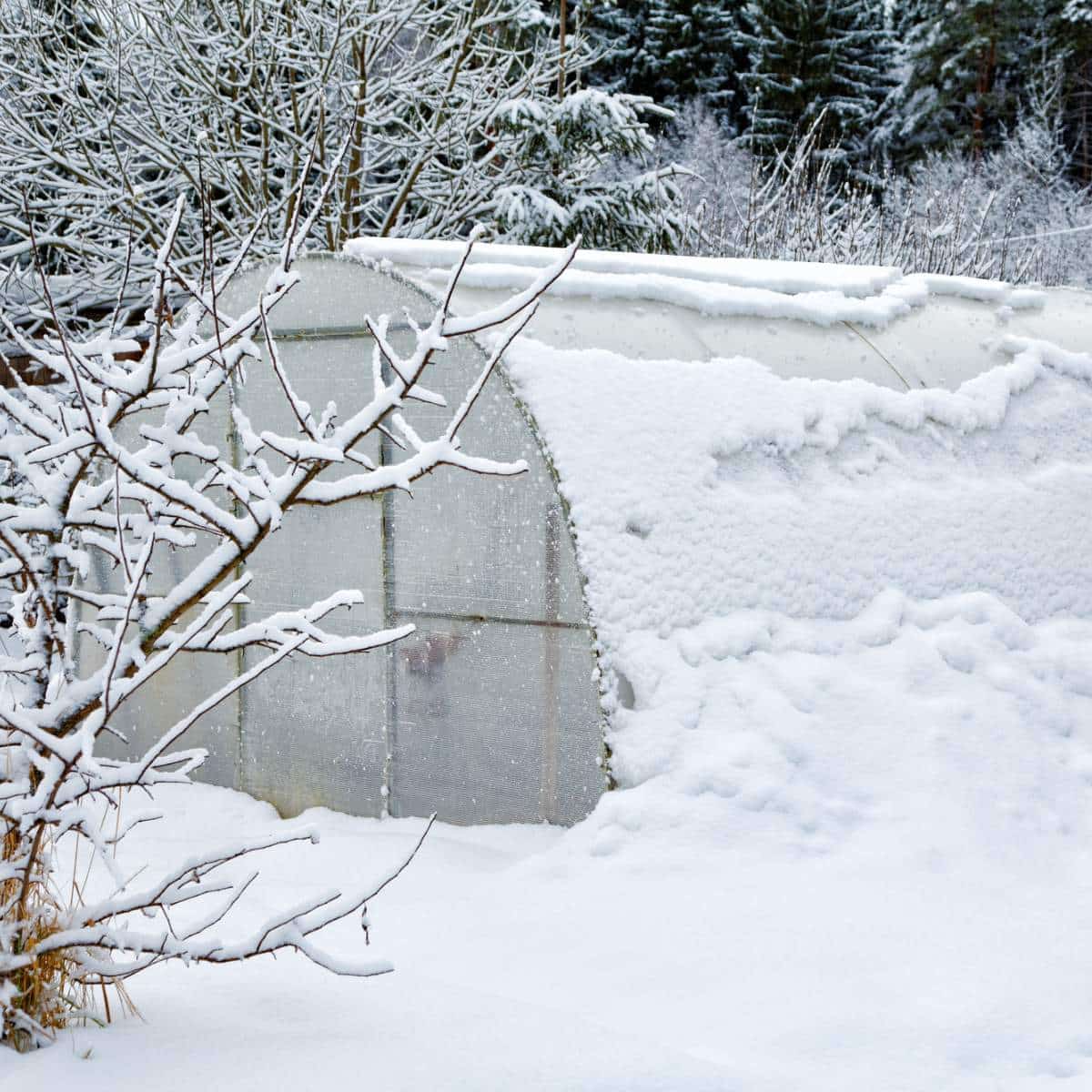
Winter doesn't mean an end to fresh salads on the table; instead, it may offer a great way to extend your growing season through cold weather. Use these winter gardening ideas to grow food through the cold season and enjoy homegrown fresh produce in the coming months.
Winter gardening explained
Winter gardening refers to growing and harvesting vegetables during the cold season. Gardeners in North America may use low tunnels, high tunnels, greenhouses, cold frames, hotbeds, portable vertical gardens or raised beds to continue growing fresh food through late winter.
My interest in winter gardening
As you probably know by now, we live in a very cold part of Canada, the Northwest Territories, directly above Alberta. Our home is about 62 degrees north, so we get very little daylight in winter.
However, we get a ton in the summer. And gardening in the north is very different from gardening down south.
Produce can get expensive in the supermarket, and while we try to keep our costs down by buying in bulk, food can get expensive. That's why I started exploring winter gardening ideas a few years ago.
We've had some luck with cinder block gardening in the summer. We're experimenting with permaculture design principles to use the microclimates on our property.
And we've had good luck with grow lights to grow beans, peppers and tomatoes indoors.
Why garden in winter
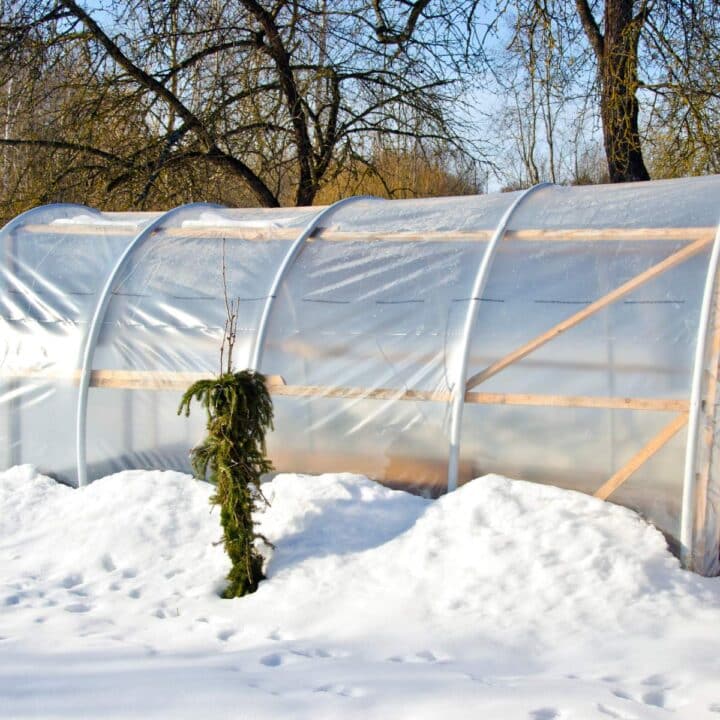
Winter gardening extends the growing season well into late fall and early spring. You can harvest homegrown produce from your vegetable garden or potager garden year-round.
Growing a garden in a winter landscape gives you a head start on your garden in early winter. And it lets you harvest vegetables during cold winter temperatures, even at a time of year when most gardens are dormant.
You can enjoy the taste and nutrients of fresh vegetables instead of frozen or canned vegetables in the dead of winter. According to Pennsylvania State University, some vegetables may even taste sweeter or more flavorful when grown in cool weather. So you can grow winter plants, or even fresh herbs for your favorite homestead recipes.
Gardening is also a fun, screen-free family project. So, if you're looking for a new addition to your list of winter activities for kids, consider growing and harvesting vegetables together with these winter gardening ideas.
Understand your zone for winter gardening
If you plan to garden in winter, get familiar with your local weather patterns, frost start and end dates and hardiness zone. Some areas of North America enjoy mild winters, and winter sowing results in year round crops.
On the other hand, some areas, like ours, understand the reality of a seven months of winter and even a hard freeze or two in early September! The good news is that when you understand hardiness zones, you can better prepare for planting times and harvest schedules, and also prepare for winter composting. And you may come up with your own winter gardening ideas.
The USDA Hardiness Zone Map divides the states into 11 separate zones. Each zone represents an area of winter coldness or hardiness. If you're in Canada, use Natural Resources Canada's plant hardiness zone finder.
Your local climate determines which plants will likely survive the winter and thrive come warm weather and springtime. In addition to temperature, factors like wind chill, snow cover and freeze-thaw cycles also matter.
Shifting weather patterns and new vegetable varieties allow home gardeners to experiment with growing your own food during colder temperatures, even in the middle of winter. If one leafy green fails due to an unusually harsh season, just try a different one next year. Over time, this approach lets you create a personalized winter garden database based on what grew best in your location during the colder months.
"I live in Zone 8B. I use mulch to protect plants from frost and cover them with row covers when it gets too cold to keep them healthy throughout the winter. Squash planted in summer also matures in winter, so I harvest them before the first frost and use them all winter round!"
— Shruthi Baskaran-Makanju, Urban Farmie
Use cold frames and row covers
A winter garden often depends on tools like cold frames and row covers, some of my favorite winter garden ideas. Row covers, mini hoop tunnels or hoop houses aid in winter gardening by protecting gardens against winter frost or heavy snowfall. Cold frames are boxes with glass or plexiglass tops that let sunlight in while providing much-needed insulation.
A cold frame acts as a mini greenhouse built over raised beds or plant rows, which traps heat from sunlight, creating a microclimate for winter vegetables and keeping plants warm even when temperatures drop outside. You can buy a cold frame built of plastic or even make a DIY cold frame from salvaged windows and lumber.
Late summer is a prime time for winter gardeners to salvage materials. The warmer weather also makes it easier to build your man-made structures, and pick up a few good deals a your local garden center, including winter-flowering plants and end-of-season garden plants that didn't make into summer gardens.
Selecting suitable crops for winter gardening
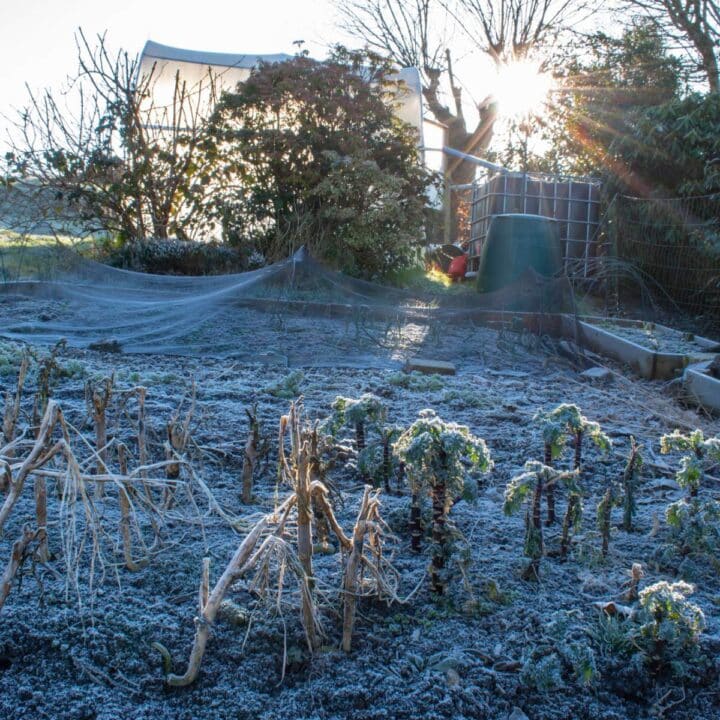
Choosing the right crops is the key to winter gardening success—the secret lies in picking plants that survive and thrive in your zone during colder months.
Generally, the best vegetables for winter gardens include leafy greens and root vegetables such as carrots, turnips, leeks and radishes. Varieties like spinach, lettuce, arugula, Asian greens, chard and kale may do well in your garden.
You can plant garlic and onions in late fall for overwintering, then harvest them in late spring or early summer. Depending on your gardening zone, you may grow hardier strains of apples, such as Frostbite Apples, suitable for temperatures as cold as minus 35 F.
Location planning for your winter garden
Choose a location with plenty of sun during short winter days. A spot with a fence or wall nearby will help shelter crops from the wind.
Raised beds or cinder block gardens offer better drainage and heat up faster than ground-level plots for cold-climate gardens. Position them in a sunny, sheltered location if possible. And remember that low-lying areas tend to collect cold air and frost.
Positioning greenhouses
If you use an unheated greenhouse or mini hoop house, placement becomes even more critical due to its fixed nature. A south-facing slope catches maximum light while providing natural protection against northerly winds. These are ideal conditions for extending the growing season into late fall or early spring.
Overcoming winter gardening challenges
Winter gardening presents unique challenges as temperatures drop. However, with some garden planning and creativity, you can grow food through the winter months.
Use hay bales or fabric row covers to add insulation and shield your crops from frost.
Create warmer winter microclimates using tools such as south-facing walls, sun-absorbing rocks and mulch.
And finally, avoid watering before expected frosts as water freezes fast. Instead, consider watering after sunrise so it has time to absorb into the soil before night falls again.
Maximizing your winter harvest
Start your winter garden by late summer or early fall to allow plants enough time to mature before the first frost hits. Then, harvest your late summer and early fall crops before hard winter weather arrives.
For leafy greens like bok choy and Swiss chard, pick leaves once they're just a few inches tall.
Plan for vegetable storage over colder months, and remember that root vegetables like carrots or Brussels sprouts sweeten after exposure to frost. If properly stored, these can provide fresh produce throughout the coldest months.
Finally, consider succession planting. This lets you replace harvested crops with new seedlings immediately, so there's always something growing and ready to harvest in your garden beds.
Grow fresh produce in winter
Depending on your local climate and growing zone, winter doesn't mean the end of garden season. Cold frames, row covers, hoop houses, heated greenhouses and raised beds are some tools that can help extend your growing season.
Choose suitable cold-weather crops and plan your winter garden location wisely to maximize success for your garden beds. Then, enjoy the fruits or vegetables of your labor.
Like this post? Save it, share it, and read it!
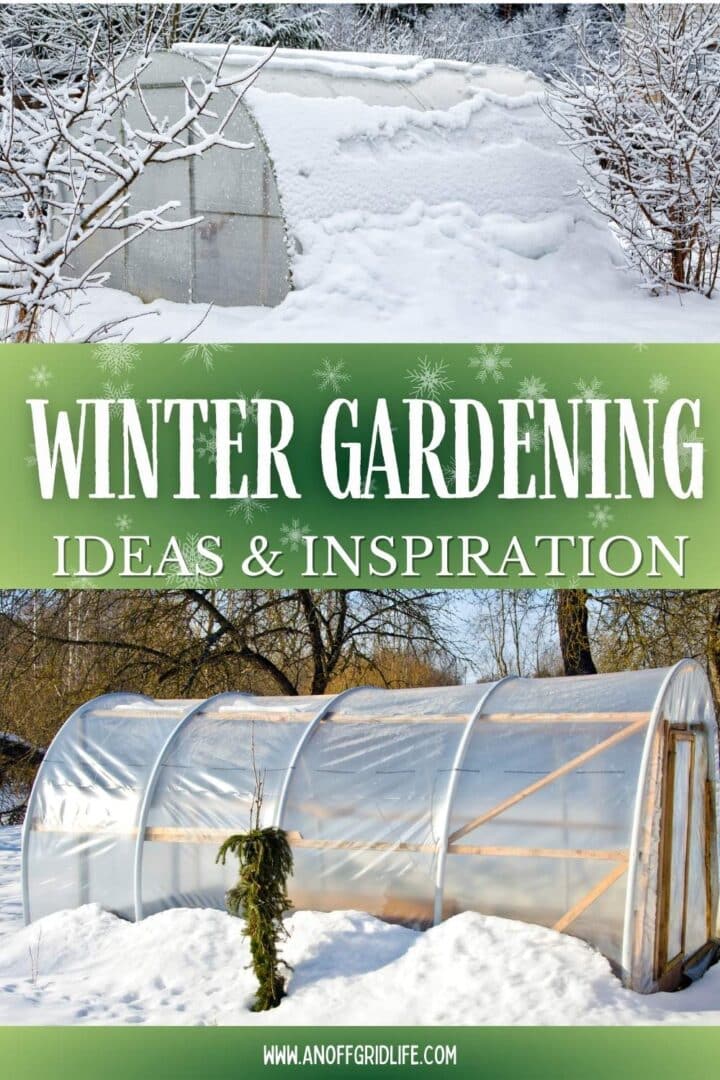

Sarita Harbour is a long-time freelance writer, blogger, and homesteader who has been creating online content for over 15 years. She’s the founder of An Off Grid Life, where she shares practical advice on self-reliance, homesteading, off-grid living, and homeschooling based on her 11-year adventure living in Canada’s remote Northwest Territories.

